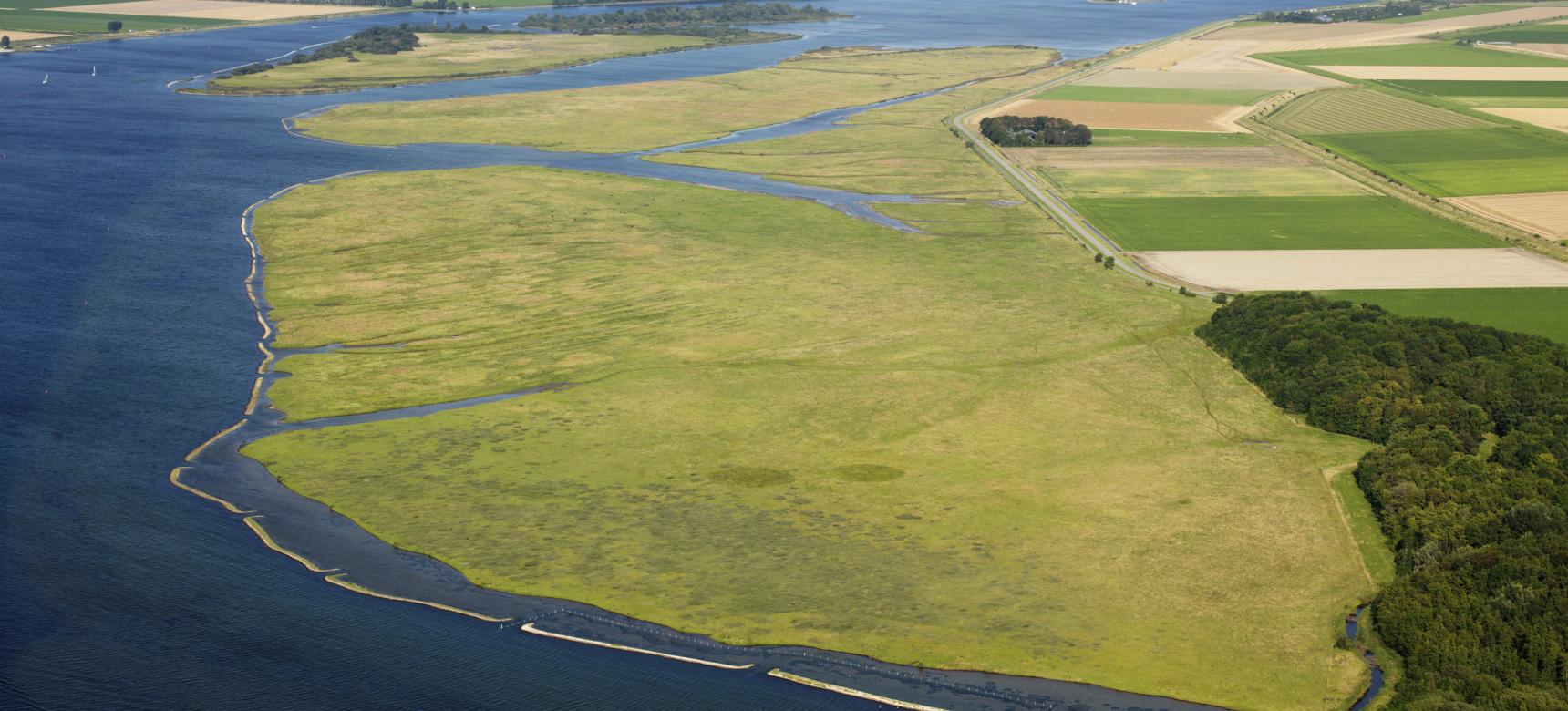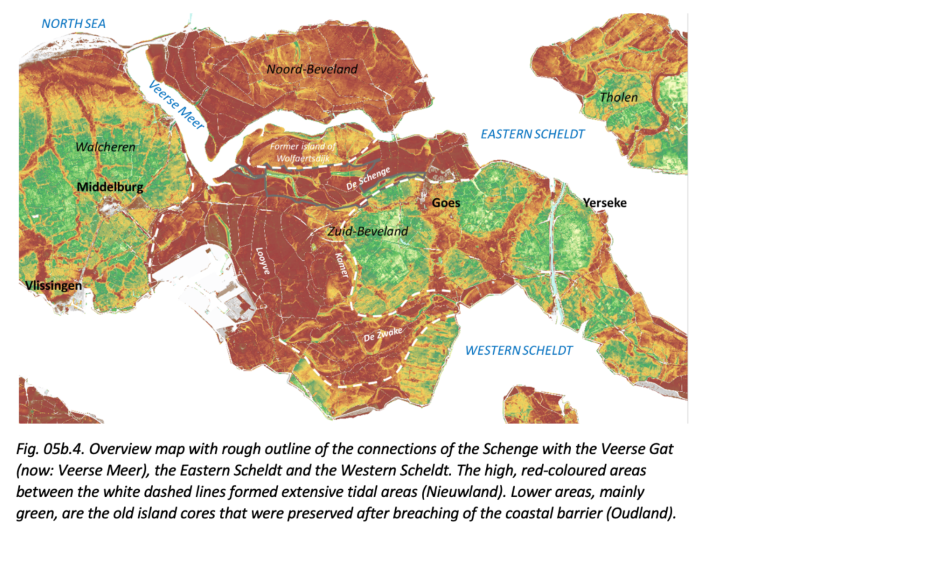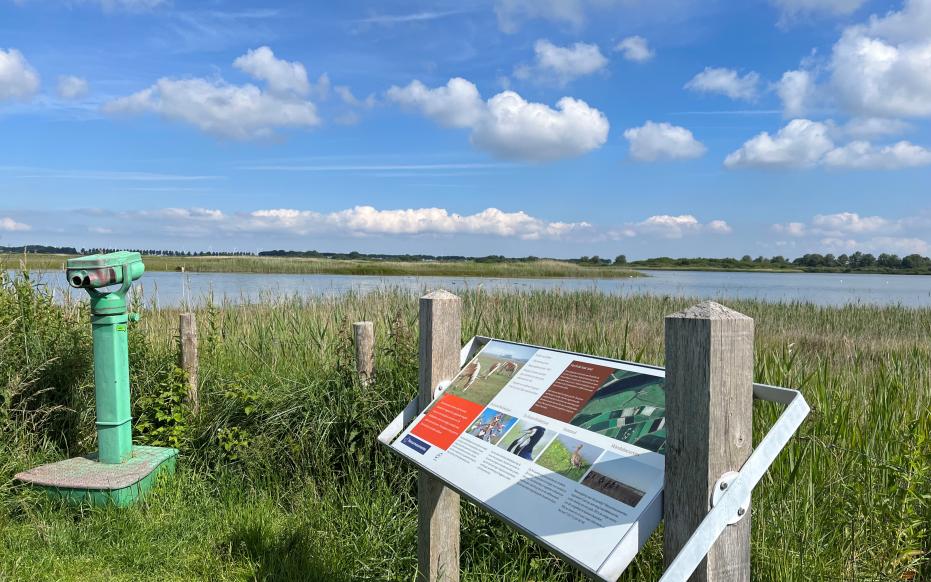The geosite Veerse Meer is a former estuary that forms part of the separation between Walcheren, Noord-Beveland and Zuid-Beveland and in the past formed a connection between the North Sea and the Eastern Scheldt. Since the construction of the Veerse Gat Dam and the Zandkreek Dam, tidal action has disappeared from the area and it has a fixed water level. Former tidal channels and low sandbars have permanently disappeared under water, creating large depth differences in the lake. Former salt marshes and high sandbars are now above water. In addition, several artificial islands have been created in the lake. The origin of this geosite goes back to about 350 A.D., when the estuary Veere-diep formed between present-day Walcheren and Noord-Beveland. Around 1000 AD, the Zuitvliet, a deeply incised tidal channel between present-day Noord- and Zuid-Beveland, also came into being. The western and eastern parts were later called the Veerse Gat and the Zandkreek, respectively. Together they would later form Veerse Meer.


